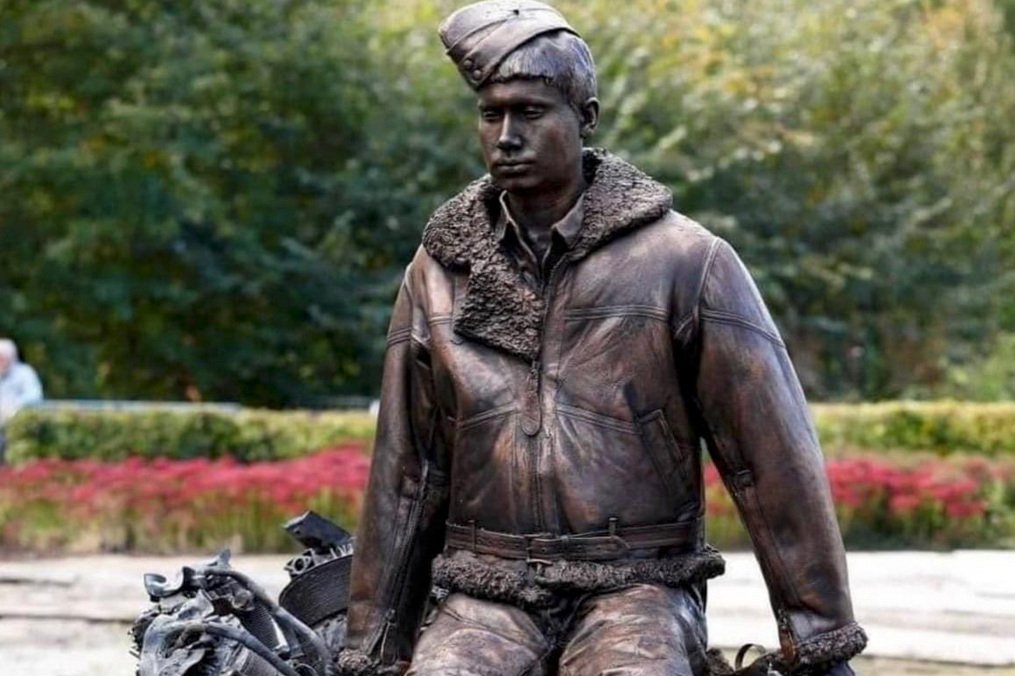Colonel Richard "Eager" Ernest Evans USAF ~ First Edition
I
ALTHOUGH I have reviewed the biography written by Colonel Evans and, following his passing in 2006, completed by his daughter Barbara Evans Kinnear, it is right and proper that the year’s RAF Papers commence with a brief look at an American Air Force officer whose combat service spanned both World War Two and the Korean War and into the Cold War, by which time he had been promoted to full colonel.
In all walks of life, there are humble people who quietly get on with the job, work behind the scenes, and have an enormous and powerful impact by this inbuilt reticence on all around them; in short, a force for good.
In all walks of life, there are people who seem destined to always hold a grudge. A mistake is made, genuinely, not maliciously, but which in that type of person’s mindset firmly lodges, transposing itself into a ‘grudge’.
I mention this because in reviewing the book, one question kept popping its head up on the page … why did Dick not reach star rank? Towards its end, I found the answer. Ah! Colonel Evans, very firmly in the former camp, had unfortunately brushed up against a bod in the latter camp. I understood all too well. So, I read the book afresh and with a new mindset. In truth, Richard was most certainly deserving of promotion to brigadier-general. And I suspect that a field marshal who also became Chief of the Imperial General Staff 1946-1948, Bernard Law Montgomery, 1st Viscount Montgomery of Alamein and to whom, for a short period during the North African Campaign, Captain Evans was his personal pilot, might also have spotted the anomaly. But life goes on, and time marches on.
II
In 2018, I visited the Yorkshire Air Museum, formerly RAF Elvington in North Yorkshire, which had been home to the Free French Air Force during World War Two. It is often overlooked that the Free French Air Force flew as part of Bomber Command in the Strategic Air Offensive against Nazi Germany.
At Elvington is a Handley Page Halifax. It is in superb condition, though not flyable. Granted access to the Halifax, along with the nephew of my uncle’s flight engineer, as well as the writer Peter Wilson Cunliffe, author of A Shaky Do - we three bods, in typical RAF slang known as the three sombreros - and I’ve yet to ascertain which of us labelled us so, but hey ho, boys will be boys and I really quite like it, keeps us firmly in the former camp - all lost our uncles on that particular Shaky Do in 1943.
III
Standing in the cockpit, the pilot’s seat just to my left where my uncle, Sgt-Plt Kenneth Ernest Webb, would have been, I asked various questions, sometimes trying to answer my own questions, as I wanted to learn as much as possible, and the one thing I’ve learned over a lifetime is that if I get the answer wrong or slightly adrift, the explanatory correction, not unlike applying a touch of left rudder or a minor flap adjustment, becomes indelible; always the best way to learn.
To one question, though, of what appeared to be a very insignificant switch to the left of the pilot’s left thigh, oh that? that’s the auto-pilot. We chatted on, but I kept having this niggling thought … Ken had an auto-pilot facility. Then, reasoning everything out in the way that Ken Webb junior tends to do … decided that it would have been embryonic but most certainly an indication not to glaze over the Pilot’s Notes for any RAF aircraft in WW2. Sure, they may be rudimentary, but the phrase cutting-edge technology was as exciting then as it is now. The phrase is with every generation, regardless of the century.
IV
Wind the clock forward to the Autumn (Fall) of 2021. Enter stage left, Richard “Eager” Ernest Evans. We are now three years on. I am reading about the cockpit of the B-17 Flying Fortress for which, courtesy of Colonel Evans and his daughter Barbara, I now seem to have developed a love affair. I am tremendously proud of all the four-engined heavies of the Royal Air Force and Commonwealth Air Forces ~ the Short Stirling, the Handley Page Halifax, the Avro Lancaster and the Sunderland Flying Boat - as well as our twin-engined bombers, such as the Bristol Blenheim, the Bristol Beaufighter, the Handley Page Hampden, Fairey Battle and the Vickers Wellington, all of which were sold short in spec by an often idiotic Air Ministry, thus sending men to certain death by their amendments to submitted drawings.
And, of course, that absolute beauty, the de Havilland Mosquito, exemplar, tour de force, pathfinder, and the dread of enemy troops and panzers alike.
Don’t even get me onto our fighters.
V
As I read one particular lengthy section, I found myself in RAF classroom mode. Because the lecturer, Colonel Evans, was giving me a one-to-one detailed explanation of the B-17’s autopilot; not only its normal use but how it is used in combat operations. My mind whizzed back to the cockpit of the Halifax. I began to obtain an understanding of that aircraft’s capability, as well as its lethal edge. I began to understand how the crew worked together even more than I’ve learned over a lifetime.
VI
Thus, it is absolutely right that Colonel Richard Ernest Evans USAF is written here. I leave the rest, below, for the reader to check through, or not, as the pleasure takes you.
Now, that is this book’s hallmark.
1 August 2024
All Rights Reserved
LIVERPOOL
© 2023 Eyes to the Skies
First written 31 March 2023 and republished 1 August 2024
“We clearly understood and appreciated
our dependency upon one another.”
Colonel Richard Ernest Evans USAF
Hardback Front Cover
The title is available in both hardback and softback via Amazon.
Visit www.richardeagerbook.com for more information.
100% of profits from the sale of the “Richard Eager” book are donated to the Air Force Aid Society.











